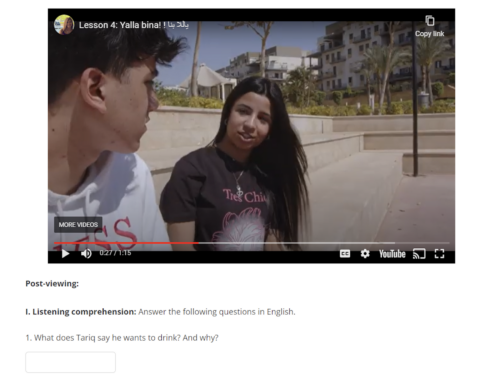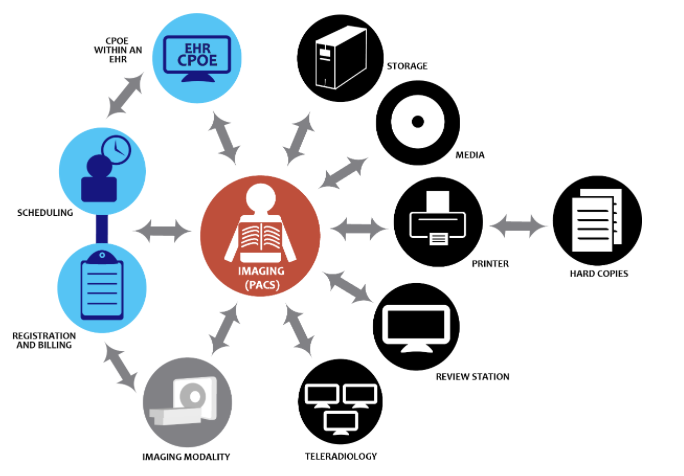Second level of the Beginning Mandarin Chinese course for independent learners to study Chinese language (pinyin and characters) and culture. Click here to learn more about the first level of the course, Elementary Chinese 1.
Beginning Chinese 2 for Independent Learners
$10
- Description
- What students will learn
- Course outline with learning objectives
- Other course details
- System requirements
Description
Beginning Chinese 2 is an introductory Mandarin Chinese course for independent learners, authored by Dr. Sue-mei Wu of Carnegie Mellon University. The course aims to help beginners continue to develop competence in listening, speaking, reading, writing, and Chinese culture. Each of the units is centered around an authentic video in Chinese. Students interact with the audio elements of the videos and are encouraged to explore the traditional and/or simplified character representations throughout the course.
Each lesson includes helpful vocabulary and grammar structures for topics such as making invitations, making requests, going to a restaurant, going shopping, showing people around, talking about hobbies, making travel plans, going to the doctor, renting an apartment, and talking about future plans. Cultural readings and videos help learners to make connections between Chinese culture and their own culture(s). Lessons culminate in a lesson test where learners can practice that lesson’s content.
What students will learn
By the end of this course, students will learn to:
- Identify the main ideas in a conversation and a written text
- Use written and oral phrases to talk about the past, present, and future
- Make cultural comparisons through writing and speaking about health, vacation, and political opinions
- Give and receive advice about a variety of topics
Course outline with learning objectives
Unit 1: Invitations
- Module 1: Main Content
-
-
- Make and accept invitations to events
-
- Module 2: Listening
-
-
- Translate sentences from Chinese to English
-
- Module 3: Grammar
-
-
- Talk about days months and years
- Use the preposition 為 to talk about how to do something for somebody
-
- Module 4: Reading Exercises
-
-
- Recognize times and dates from a short text
-
- Module 5: Consolidation Exercises
-
-
- Describe street signs
-
- Module 6: Culture Link
-
-
- Make cultural comparisons about dating
-
- Module 7: Unit Test
Unit 2: Making Requests
- Module 8: Main Content
-
-
- Request information in formal and informal contexts
-
- Module 9: Listening
-
-
- Recognize the pinyin used for new vocabulary words
-
- Module 10: Grammar
-
-
- Use optative verbs to discuss wish, desire, obligation, capability, possession, or permission
- Use 多 to express continued action
- Use 先…然後…再 to express actions in a sequence
-
- Module 11: Reading Exercises
-
-
- Identify supporting information in a short text
-
- Module 12: Consolidation Exercises
-
-
- Identify how to make and respond to a request
-
- Module 13: Culture Link
-
-
- Discuss differences between public restrooms in the US and China
-
- Module 14: Unit Test
Unit 3: Restaurant
- Module 15: Main Content
-
-
- Decide where to go to eat with a friend
- Order food at a restaurant
-
- Module 16: Listening
-
-
- Translate the main ideas from an audio source.
-
- Module 17: Grammar
-
-
- Employ 還是 and 或者 to express alternative choices
- Use 杯瓶盤碗雙 as measure word classifiers
- Employ 極了 as an intensifier
-
- Module 18: Reading Exercises
-
-
- Analyze supporting information in a text.
-
- Module 19: Consolidation Exercises
-
-
- Interpret a Chinese menu
-
- Module 20: Culture Link
-
-
- Discuss the differences between Chinese food and Western food
-
- Module 21: Unit Test
Unit 4: Shopping
- Module 22: Main Content
-
-
- Employ vocabulary to talk about clothing and sizes
-
- Module 23: Listening
-
-
- Distinguish prices for a variety of items when listening to an audio source
-
- Module 24: Grammar
-
-
- Determine when to employ 量詞: 件, 條, 雙 as measure word classifiers
- Use reduplication of verbs with 看
- Employ “好+V: “好看,好吃”; “好學, 好開””
-
- Module 25: Reading Exercises
-
-
- Distinguish the main idea based on a short text
-
- Module 26: Consolidation Exercises
-
-
- Recognize key words in a short conversation about clothing
-
- Module 27: Culture Link
-
-
- Compare cultural wedding traditions
-
- Module 28: Unit Test
Unit 5: Showing People Around
- Module 29: Main Content
-
-
- Ask and describe where things are located
-
- Module 30: Listening
-
-
- Respond to cardinal directions
-
- Module 31: Grammar
-
-
- Use position words ( 前後左右上下裡外旁 (邊), 中間, 對面) to describe where things are located
- Express location with 在, 有 and 是
-
- Module 32: Reading Exercises
-
-
- Employ context clues to understand new words
-
- Module 33: Consolidation Exercises
- Describe one’s housing arrangements
- Module 34: Culture Link
-
-
- Compare and contrast principles of interior design (i.e., Fengshui)
-
- Module 35: Unit Test
Unit 6: Hobbies & Sports
- Module 36: Main Content
-
-
- Describe one’s hobbies, sports, and interests
-
- Module 37: Listening
-
-
- Identify what others enjoy doing when listening to audio
-
- Module 38: Grammar
-
-
- Employ 得 to tell how an action is performed
- Use the ordinal numbers to describe in what order actions occurred
- Give examples with 比如
- Use 最 to indicate a superlative
-
- Module 39: Reading Exercises
-
-
- Recognize vocabulary for the different sports
-
- Module 40: Consolidation Exercises
-
-
- Describe cultural leisure practices
-
- Module 41: Culture link
-
-
- Compare and contrast sports culture in China and one’s own culture
-
- Module 42: Unit test
Unit 7: Travel Plans
- Module 43: Main Content
-
-
- Discuss weather and seasons
-
- Module 44: Listening
-
-
- Identify the supporting details in an audio segment
-
- Module 45: Grammar
-
-
- Explain events that are about to happen with 就/快要……了
- Use 離 +很遠(近) to indicate distance
- Talk about vehicles with 坐, 騎and 開
-
- Module 46: Reading Exercises
-
-
- Recognize vocabulary for travel expressions
-
- Module 47: Consolidation Exercises
- Describe travel plans
- Module 49: Unit Test
Unit 8: An Illness
- Module 50: Main Content
-
-
- Talk about sickness and going to the doctor
-
- Module 51: Listening
-
-
- Recognize pinyin for common expressions
-
- Module 52: Grammar
-
-
- Describe past action and new situations with 了
- Indicate possession, degree, and adverbs with 的, 得 and 地
-
- Module 53: Consolidation Exercises
-
-
- Identify vocabulary for discussing illness
-
- Module 54: Culture Link
-
-
- Compare and contrast health practices in China and one’s own culture
-
- Module 55: Unit Test
Unit 9: Renting an Apartment
- Module 56: Main Content
-
-
- Discuss lodging details and costs
-
- Module 57: Listening
-
-
- Translate the main ideas of a short audio
-
- Module 58: Grammar
-
-
- Indicate motion with 趨向補語
- Stress effects of an action with Ba 把 construction
-
- Module 59: Reading Exercises
-
-
- Identify the causes and effects in a short text
-
- Module 60: Consolidation Exercises
-
-
- Identify the causes and effects in a short audio
-
- Module 61: Unit Test
Unit 10: Future Plans
- Module 62: Main Content
-
-
- Talk about plans for the future
- Describe work and study
-
- Module 63: Listening
-
-
- Understand conversations related to the future
-
- Module 64: Grammar
-
-
- Review measure words
- Review conjunctions
- Review verb aspects
-
- Module 65: Reading Exercises
-
-
- Recognize the details in a short text
-
- Module 66: Consolidation Exercises
-
-
- Identify future plans
-
- Module 67: Unit Test
Other course details
System requirements
OLI system requirements, regardless of course:
- internet access
- an operating system that supports the latest browser update
- the latest browser update (Chrome recommended; Firefox, Safari supported; Edge and Internet Explorer are supported but not recommended)
- pop-ups enabled
- cookies enabled
Some courses include exercises with exceptions to these requirements, such as technology that cannot be used on mobile devices.
This course’s system requirements:
- for academic course key students only: chat environment and audio recording.






